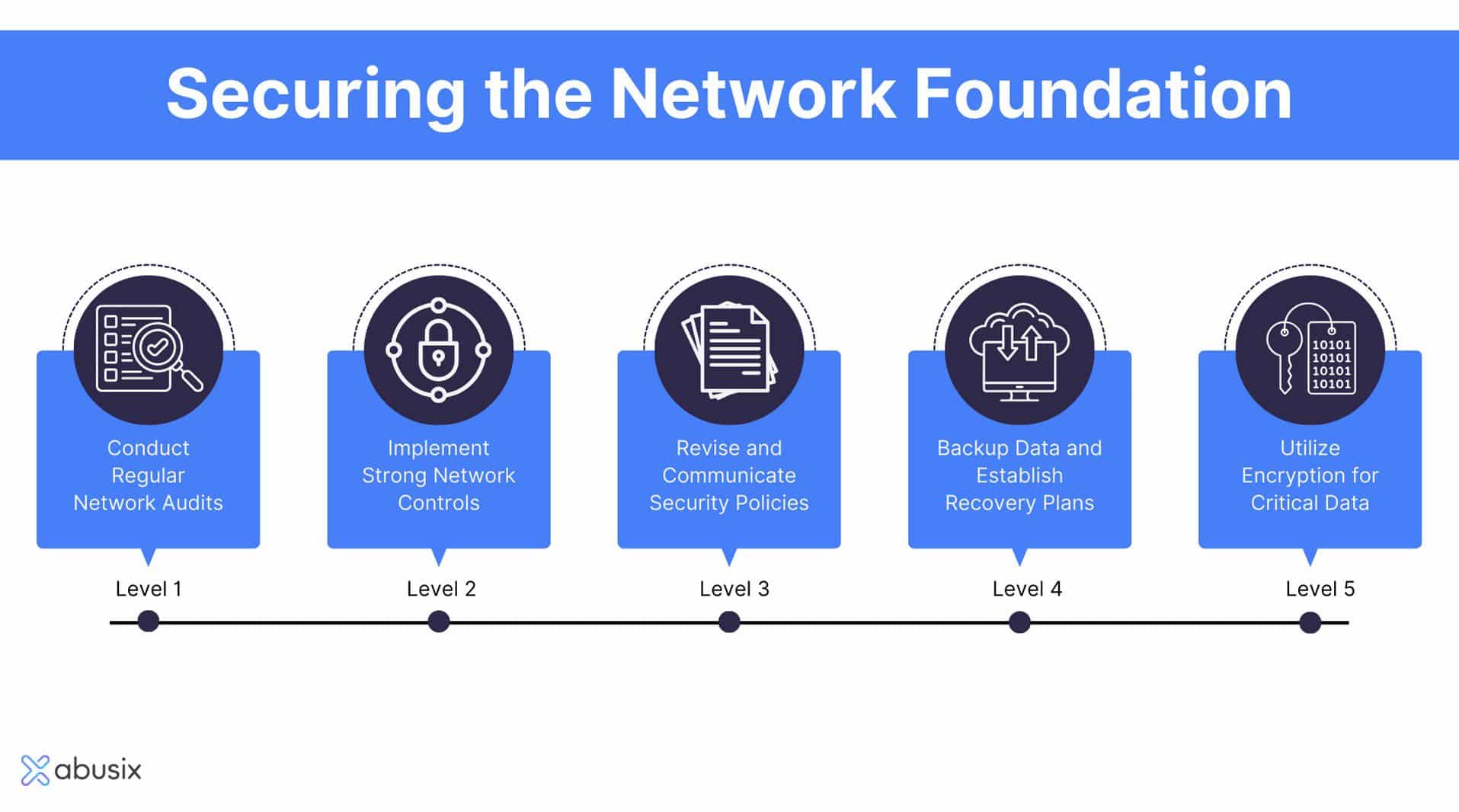FFT Pipeline Protection: Advanced Technologies to Safeguard Your Pipeline Infrastructure
FFT Pipeline Protection: Advanced Technologies to Safeguard Your Pipeline Infrastructure
Blog Article
Just How Information and Network Security Secures Against Arising Cyber Risks
In a period marked by the fast development of cyber hazards, the relevance of information and network safety has never ever been a lot more obvious. Organizations are increasingly reliant on sophisticated protection actions such as encryption, accessibility controls, and aggressive monitoring to safeguard their electronic assets. As these threats come to be much more complicated, comprehending the interplay between information safety and network defenses is necessary for alleviating risks. This conversation aims to check out the critical elements that strengthen a company's cybersecurity position and the strategies needed to stay ahead of potential susceptabilities. What stays to be seen, however, is just how these procedures will certainly progress despite future obstacles.
Recognizing Cyber Risks

The ever-evolving nature of innovation continually presents brand-new vulnerabilities, making it critical for stakeholders to remain attentive. People may unwittingly drop target to social design strategies, where assaulters manipulate them right into disclosing sensitive details. Organizations face one-of-a-kind difficulties, as cybercriminals usually target them to manipulate useful information or disrupt procedures.
In addition, the increase of the Internet of Points (IoT) has actually increased the strike surface area, as interconnected tools can serve as access points for assaulters. Recognizing the significance of durable cybersecurity practices is vital for alleviating these risks. By cultivating a thorough understanding of cyber individuals, organizations and risks can apply reliable techniques to protect their electronic possessions, ensuring durability in the face of a progressively complex danger landscape.
Trick Elements of Data Safety And Security
Making sure data safety calls for a multifaceted approach that includes various key components. One fundamental element is information encryption, which changes sensitive details right into an unreadable format, available just to licensed users with the suitable decryption keys. This offers as a vital line of protection versus unapproved access.
Another important part is gain access to control, which manages that can watch or control data. By applying strict individual authentication methods and role-based accessibility controls, organizations can reduce the threat of insider threats and data violations.

Additionally, information covering up techniques can be utilized to protect sensitive info while still permitting its usage in non-production settings, such as testing and growth. fft perimeter intrusion solutions.
Network Security Strategies
Implementing robust network safety methods is necessary for protecting an organization's digital infrastructure. These techniques entail a multi-layered strategy that consists of both hardware and software remedies made to safeguard the stability, confidentiality, and schedule of data.
One critical part of network protection is the release of firewall programs, which function as a barrier between trusted interior networks and untrusted exterior networks. Firewall softwares can be hardware-based, software-based, or a combination of both, and they aid filter outgoing and incoming web traffic based upon predefined safety and security regulations.
Furthermore, intrusion detection and prevention systems (IDPS) play an important role in keeping an eye on network traffic for suspicious activities. These systems can notify managers to potential breaches and act to reduce threats in real-time. Consistently covering and updating software is also vital, as susceptabilities can be manipulated by cybercriminals.
Furthermore, carrying out Virtual Private Networks (VPNs) makes certain secure remote gain access to, encrypting data sent over public networks. Segmenting networks can reduce the assault surface area and contain possible breaches, limiting their influence on the overall facilities. anchor By taking on these approaches, companies can properly fortify their networks versus arising cyber hazards.
Best Practices for Organizations
Establishing finest techniques for companies is essential in keeping a strong protection posture. An extensive technique to information and network safety starts with normal risk analyses to determine susceptabilities and potential risks. Organizations needs to apply robust gain access to controls, ensuring that just licensed personnel can access sensitive information and systems. Multi-factor verification (MFA) ought to be a conventional need to boost safety and security layers.
Furthermore, continual staff member training and understanding programs are important. Workers ought to be educated on recognizing phishing efforts, social design methods, and the relevance of sticking to safety procedures. Routine updates and patch administration for software application and systems are likewise important to shield versus known susceptabilities.
Organizations should evaluate and create event response prepares to guarantee readiness for potential violations. This includes developing clear interaction networks and functions during a security case. Data file encryption must be employed both at rest and in transit to safeguard delicate details.
Finally, conducting routine audits and conformity checks will help ensure adherence to appropriate policies and well-known plans - fft perimeter intrusion solutions. By adhering to these best methods, companies can dramatically improve their resilience against emerging cyber dangers and safeguard their vital assets
Future Trends in Cybersecurity
As organizations navigate an increasingly complex electronic landscape, the future of cybersecurity is poised to develop substantially, driven by arising modern technologies and changing threat standards. One prominent trend is the combination of expert system (AI) and device discovering (ML) right into safety frameworks, allowing for real-time threat discovery and reaction automation. These innovations can assess substantial quantities of data to recognize abnormalities and potential violations much more successfully than traditional methods.
An additional vital fad is the surge of zero-trust design, which requires continual confirmation of user identifications and device safety and security, no matter their location. This strategy lessens the danger of insider dangers and improves defense against exterior assaults.
Moreover, the boosting fostering of cloud services necessitates robust cloud protection methods that address distinct susceptabilities connected with cloud environments. As remote work comes to be an irreversible component, safeguarding endpoints will additionally end up being paramount, resulting in an elevated concentrate on endpoint detection and action (EDR) remedies.
Last but not least, governing compliance will proceed to shape cybersecurity practices, pressing companies to take on much more stringent sites information security measures. Accepting these fads will be essential for companies to strengthen their defenses and navigate the progressing landscape of cyber risks efficiently.
Verdict
In verdict, the implementation of robust information and network security procedures is vital for organizations to safeguard against emerging cyber risks. By making use of file encryption, gain access to control, and efficient network protection methods, organizations can significantly lower vulnerabilities and safeguard delicate information. Adopting best techniques additionally enhances resilience, preparing companies to encounter advancing cyber difficulties. As cybersecurity remains to evolve, remaining notified regarding future trends will be critical in preserving a strong protection against possible hazards.
In an era noted by the quick evolution of cyber threats, the relevance of data and network safety and security has actually never been a lot more obvious. As these threats end up being more complicated, comprehending the interplay between data protection and network defenses is important for minimizing risks. Cyber risks encompass a vast range of malicious activities aimed at compromising the discretion, integrity, and accessibility of data and networks. A detailed approach to data and network security begins with normal danger analyses to identify susceptabilities and potential threats.In final thought, the execution of robust data and network have a peek at this website protection measures is important for organizations to safeguard against arising cyber dangers.
Report this page